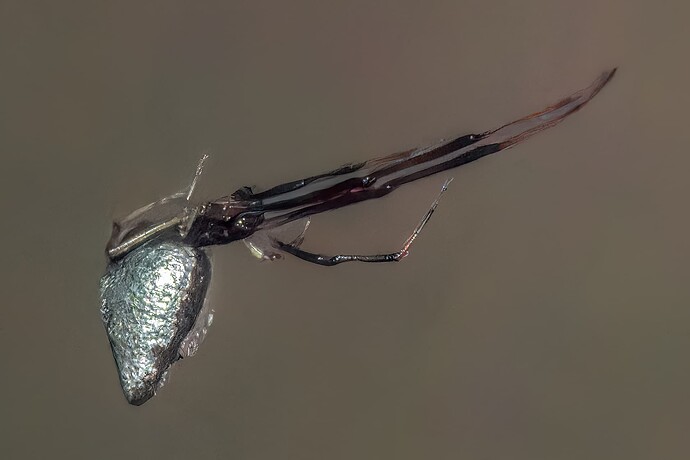You know that feeling when you see something that you just somehow KNOW you’ve never seen before, and you can feel the adrenalin rush beginning?
Yesterday, I made my first real ‘bugging’ trip after having surgery a few weeks ago. It’s taken a while to get most of my stamina back, but I felt I was up to a modest hour or so around a park nearby.
I chose this park because as an agricultural research centre it had a very diverse population of flora — cultivated and wild, and a good mix of gentle trails that included a lovely aboretum, creekside gardens, and… a wide, open-air pedestrian tunnel under a two-lane road that I’ve been to many times before as it’s a natural spider haven.
About 30 seconds into the tunnel (it’s only lit by daylight) and I’m shooting some familiar species and my brother-in-law, who is down visiting us, is lurking about ten feet ahead of me and says, “What’s this one?”
He’s pointing to this:
And I’m, “Whuh???” And immediately start shooting. Which is tricky because it’s lurking beneath layers of orbweaver webbing (why haven’t the much larger orbweavers killed this?) and looking a little like it might scoot off. But that silver dome. Through the camera I swear it’s like somebody took some tiny aluminum foil and wrapped it around its ‘cone’.
I did the best I could – no flash, I was using a camera-mounted flood light. But I knew I had something really good.
Back home and iNat suggests, an Argyrodes (Dewdrop) spider. And it looks like it might be the first in Canada! (There’s another old listing nearby but it looks nothing like the one I saw).
Anyhow, now I know a little more about these spiders and it’s an amazing story. In exchange for letting these small spiders share their web and tinier food morsels, the orbweavers get, in effect, a shiny, fake ‘star’ to attract larger moths, which are too big for the smaller spiders to catch. Never heard of these before at all!
So far, the local spider experts I’ve found online have never seen one this far north either. Very exciting and for me, what a way to ‘get back in the game’!
Aug 11/2024, Niagara region, Canada
[Observation: https://www.inaturalist.org/observations/235220418]

























